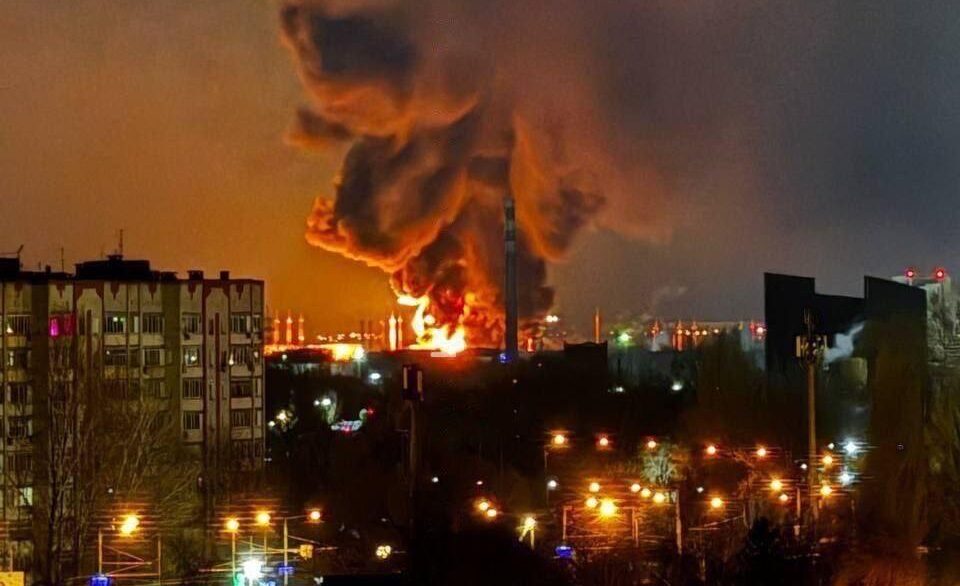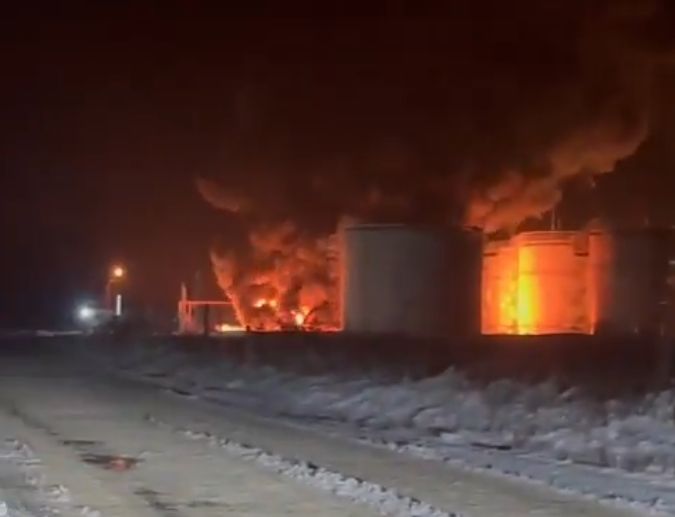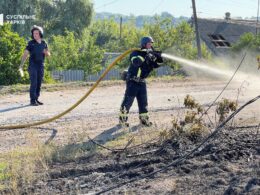A fire erupted at an oil depot in Novominskaya, Krasnodar Krai, following a reported drone strike in the early hours of 5 February 2025, according to the Astra news service, according to multiple sources including local Russian officials and monitoring services.
The attack on the Albashnet LLC facility in Novominsk, occurring approximately 250 kilometers from the Ukrainian front lines, resulted in several oil storage tanks catching fire, demonstrating Ukraine’s potential growing capability to strike strategic Russian infrastructure at extended ranges amid an ongoing western ban on striking objects in Russia.
Update: Ukraine’s Security Service has carried out the attack in coordination with other branches of the armed forces, the General Staff posted on Facebook. The Staff notes that this plant is used for primary oil refining and production of petroleum products, and is involved in the supply of gasoline and diesel for the Russian army. It also said that Ukraine struck a Russian Buk air defense system in occupied Zaporizhzhia Oblast.
Video footage captured at 1:22 local time shows what appears to be the moment of impact, directly contradicting official Russian claims about falling debris. The footage clearly shows a strike on the facility, not debris damage as claimed by local authorities.
The attack was likely carried out with a missile-drone, which Ukraine has been developing to work around Western restrictions on striking Russian objects. Last year, Ukraine announced the development of the Palyanytsia missile-drone; its exact characteristics are unclear, but the range was estimated as at least 600 km.
Krasnodar Krai Governor Veniamin Kondratiev acknowledged the incident on Telegram, claiming that “drone debris fell on a tank with minimal petroleum products,” leading to a second-degree complexity fire that required 55 personnel and 19 pieces of equipment to combat.
Notably, while Kondratiev blamed the “Kyiv authorities” for the attack, the Russian Ministry of Defense’s official statements only mentioned intercepting two drones in Kursk Oblast and two in Belgorod Oblast, with no mention of any air defense activity in Krasnodar Krai.
NASA’s FIRMS monitoring system confirmed a significant thermal event at the facility (coordinates 46.33291, 38.93463) at 1:11 AM local time. The oil depot, which contains eight storage tanks – three large and five medium-sized – is located approximately 250 kilometers from the Ukrainian front lines.
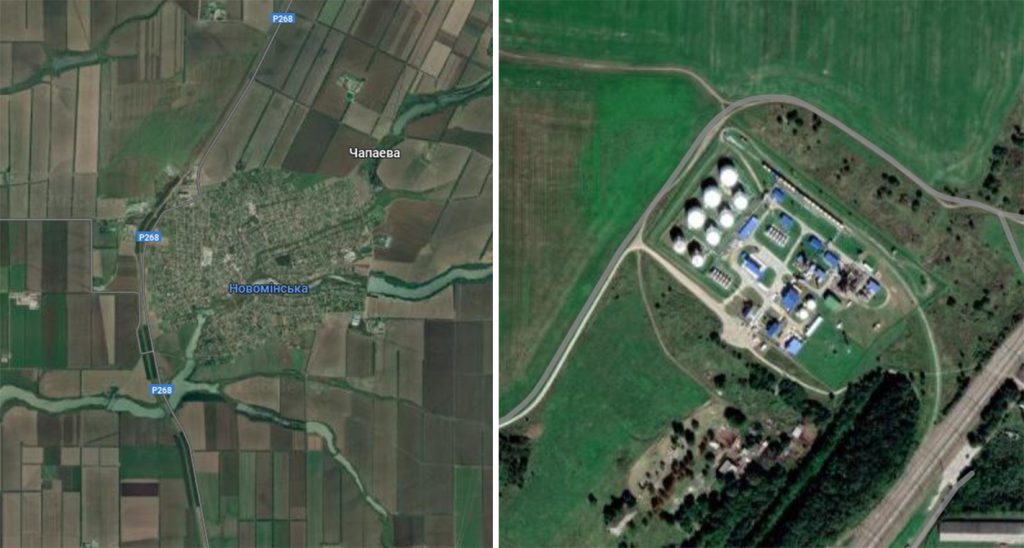
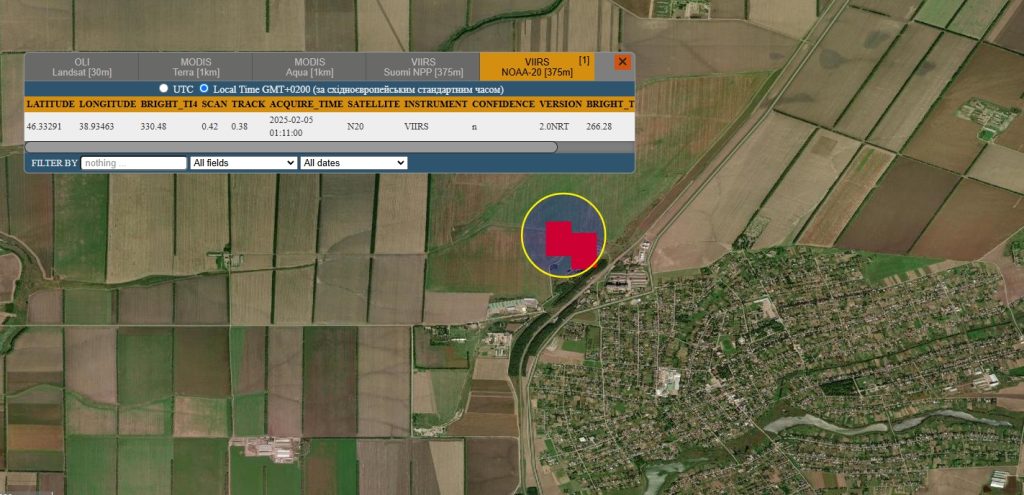
In recent weeks, Ukraine has intensified its drone operations against Russian targets, achieving significant successes. Notably, Ukrainian drones have struck key energy facilities in southern Russia, including a major Lukoil oil refinery in Volgograd and a gas processing plant in Astrakhan, causing substantial fires and operational disruptions.
These attacks have not only inflicted material damage but have also forced temporary suspensions of flights across regions from the Volga to the Caucasus. The Ukrainian military’s 14th UAV Regiment has been at the forefront of these operations, employing coordinated drone swarms to overwhelm Russian air defenses and effectively target critical infrastructure.
These drone strikes have raised concerns about Russia’s ability to maintain its fuel production capacity, as multiple key refineries have been targeted. The increased frequency and effectiveness of these attacks are attributed to advancements in Ukraine’s domestic drone production, which now supplies 96% of the military’s UAV needs. This surge in production has enabled Ukraine to plan for 30,000 long-range drone units in 2025, significantly enhancing its operational capabilities.
The strategic deployment of these drones has not only disrupted Russian supply lines and logistics but has also compelled Russia to reassess its defensive strategies, highlighting the evolving dynamics of modern warfare.
